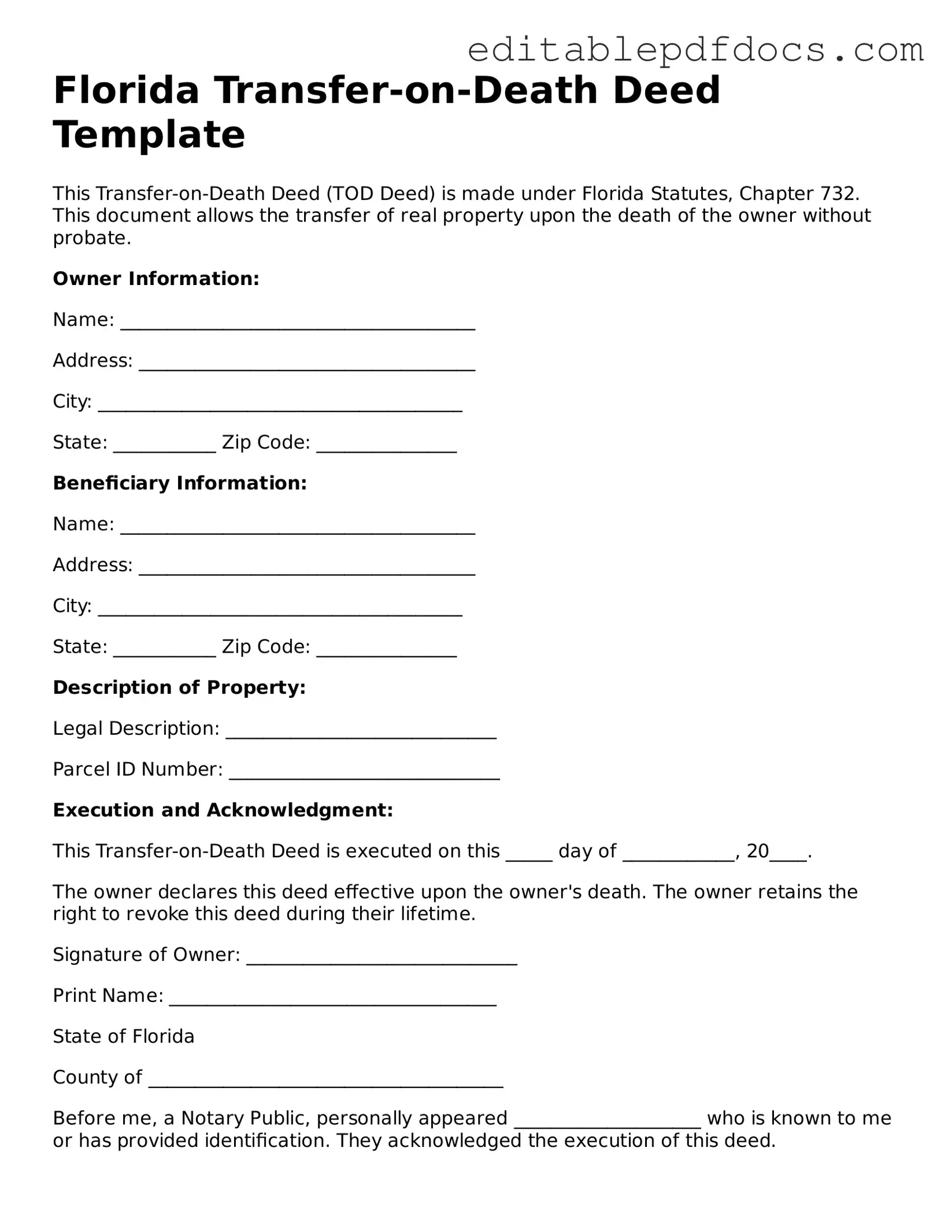When individuals decide to use a Transfer-on-Death (TOD) deed in Florida, they often aim to simplify the process of transferring property upon death. However, several common mistakes can complicate this otherwise straightforward procedure. Awareness of these pitfalls can help ensure that the deed serves its intended purpose.
One frequent error occurs when people fail to properly identify the property being transferred. The deed must contain a precise legal description of the property. Relying on informal descriptions or addresses can lead to confusion and disputes among heirs. It is essential to refer to the official property records to ensure accuracy.
Another mistake involves the selection of beneficiaries. Some individuals may neglect to clearly specify who will inherit the property. If the beneficiaries are not named explicitly, or if there are ambiguities in their identification, the deed may not be enforceable. This can result in unintended consequences, such as property being subject to probate or being divided among multiple parties in ways not originally intended.
Additionally, many people overlook the requirement for signatures. A Transfer-on-Death deed must be signed by the property owner, and in Florida, it must also be notarized. Failing to meet these formalities can render the deed invalid. It is crucial to ensure that all necessary parties are present and that the deed is executed according to the state’s legal requirements.
Another common oversight is not recording the deed with the appropriate county office. A Transfer-on-Death deed must be recorded to be effective. If the deed is not filed, it may not be recognized after the owner’s death, leading to complications in the transfer of property. Timely recording is essential to ensure that the wishes of the property owner are honored.
Lastly, some individuals may mistakenly believe that a Transfer-on-Death deed can replace a will. While a TOD deed can effectively transfer property outside of probate, it does not address other assets or debts. Relying solely on a TOD deed without a comprehensive estate plan can lead to confusion and unintended consequences. It is advisable to consider how the TOD deed fits into the broader context of one’s estate planning.
